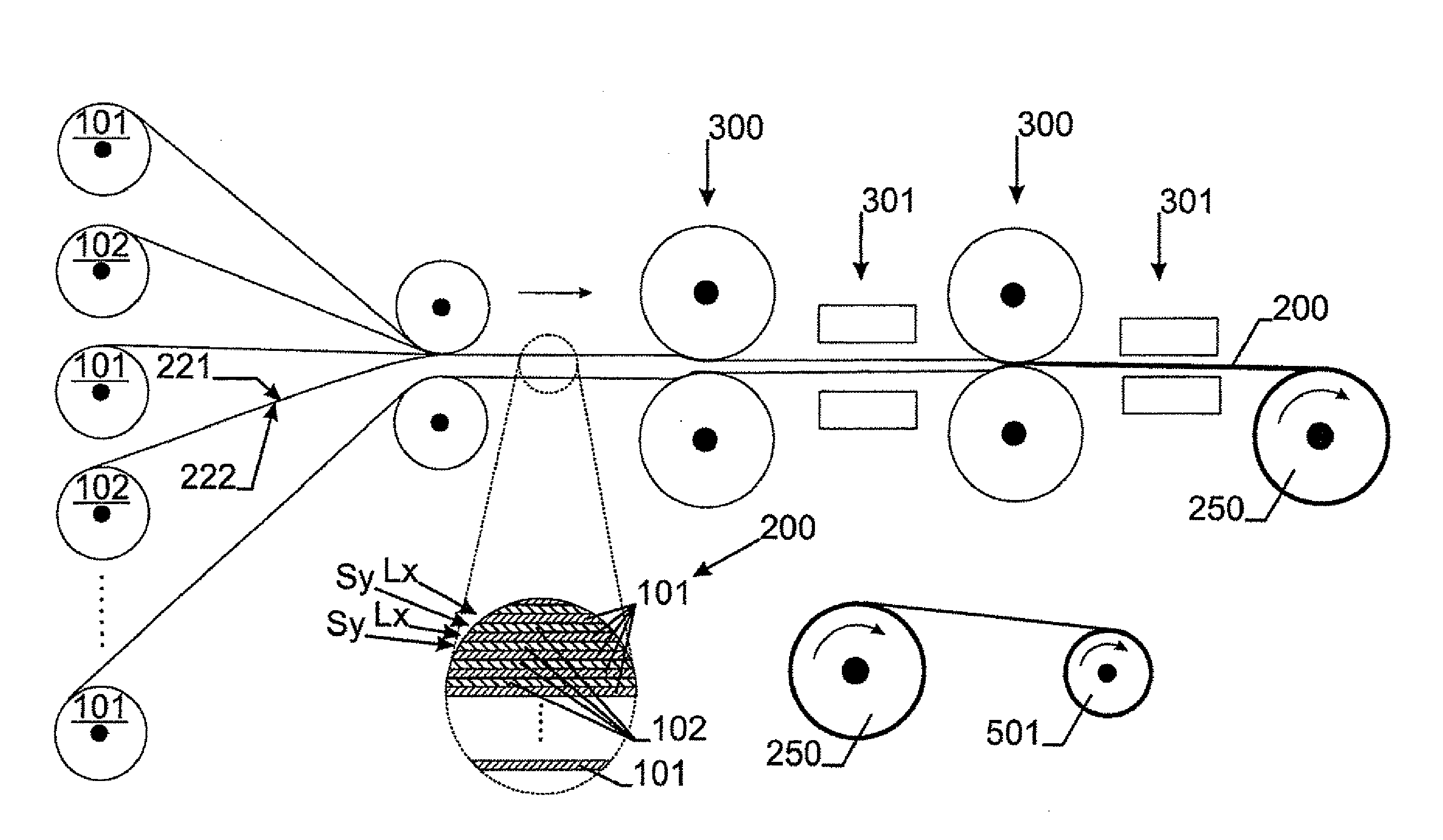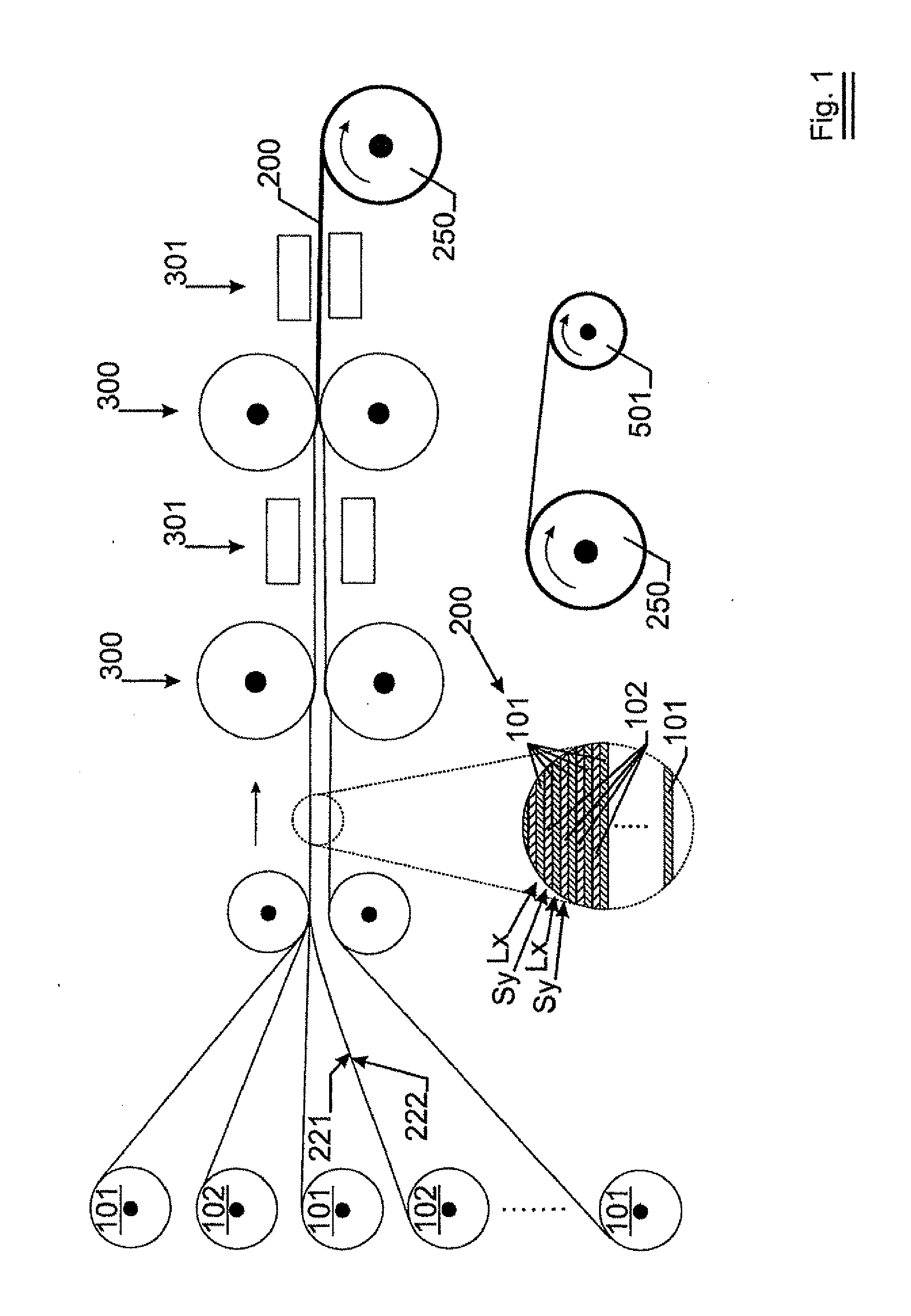Method to provide coil shaved metal fibers
a metal fiber and coil technology, applied in the field of metal fibers, can solve the problems of difficult if not impossible to provide machineable foils with thicknesses less than 35 m for a considerable number of metal alloys, difficult if not impossible to shave at a cutting rate less than about 10 m, and numerous process interruptions, etc., to achieve the effect of improving filter efficiency, reducing processing costs, and reducing processing costs
- Summary
- Abstract
- Description
- Claims
- Application Information
AI Technical Summary
Benefits of technology
Problems solved by technology
Method used
Image
Examples
first embodiment
[0072]FIG. 1, FIG. 2, FIG. 3 and FIG. 4 together show a schematic representation of the steps of a method to provide a coil shaved metal fiber according to the present invention.
[0073]As shown in FIG. 1, a composite metal foil with a desired composition and thickness is provided.
[0074]A number of metal foils 101, out of which metal fibers are to be made, are provided. A number of foils 102 of sacrificial metal, such as Cu, are provided as well. The foils are stacked in such a way that between each pair of adjacent metal foils 101, a sacrificial metal foil 102 is provided. The foils are stacked or layered in order to provide a metal composite foil 200, the metal composite foil comprising at least two metal layers Lx for being converted into metal fibers and being provided by the metal foils 101. Between each pair of adjacent metal layers, a sacrificial layer Sy is provided from a sacrificial metal, each sacrificial layer being provided by one of the sacrificial metal foils 102.
[0075]...
second embodiment
[0096]The coil shaved metal fibers according to the present invention may be used to provide metal fiber fleeces, such as metal fibers sintered fleeces or structures for use as burner surface, e.g. radiant gas burner surfaces, or filter media for filtration of fluids such as liquids or gases. The metal fiber fleeces, such as metal fibers sintered fleeces or structures may be used for diesel exhaust filtration or purification or for acoustic damping purposes. As the deviation on fiber equivalent diameter is smaller, the deviation on air permeability of the fleece is reduced as compared to prior art.
PUM
| Property | Measurement | Unit |
|---|---|---|
| thickness | aaaaa | aaaaa |
| thickness | aaaaa | aaaaa |
| thickness | aaaaa | aaaaa |
Abstract
Description
Claims
Application Information
 Login to View More
Login to View More - R&D
- Intellectual Property
- Life Sciences
- Materials
- Tech Scout
- Unparalleled Data Quality
- Higher Quality Content
- 60% Fewer Hallucinations
Browse by: Latest US Patents, China's latest patents, Technical Efficacy Thesaurus, Application Domain, Technology Topic, Popular Technical Reports.
© 2025 PatSnap. All rights reserved.Legal|Privacy policy|Modern Slavery Act Transparency Statement|Sitemap|About US| Contact US: help@patsnap.com



